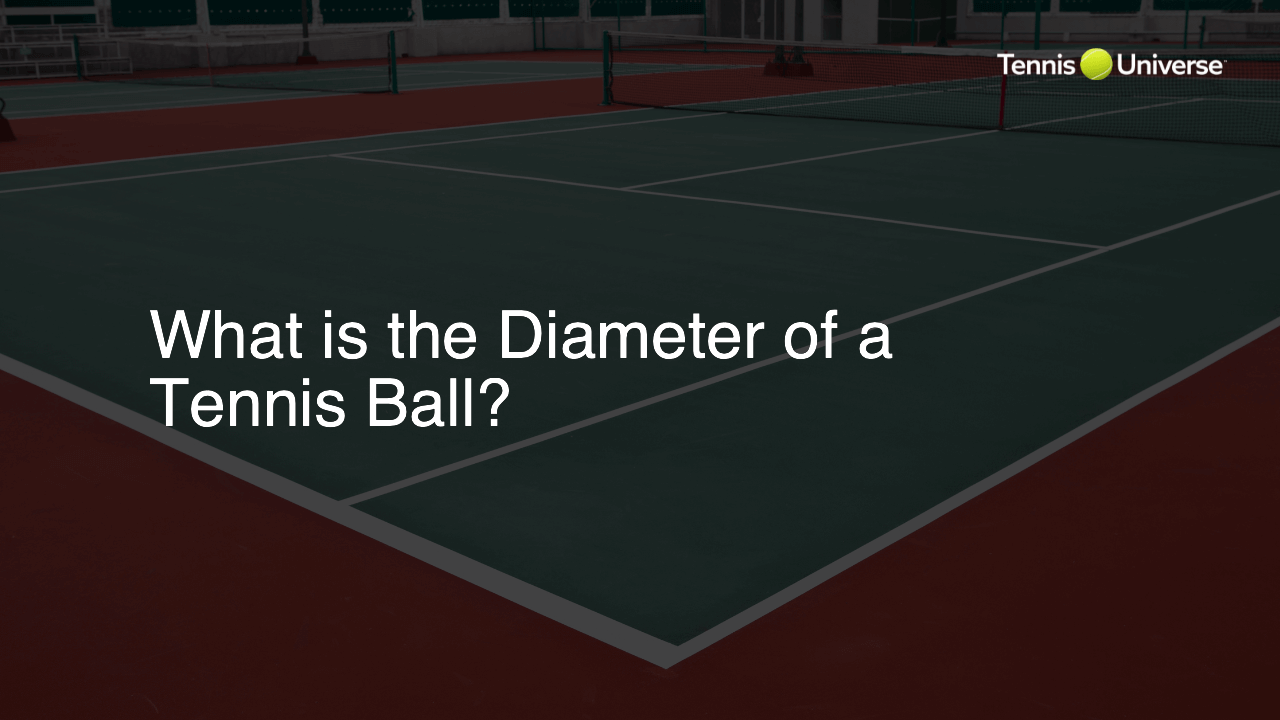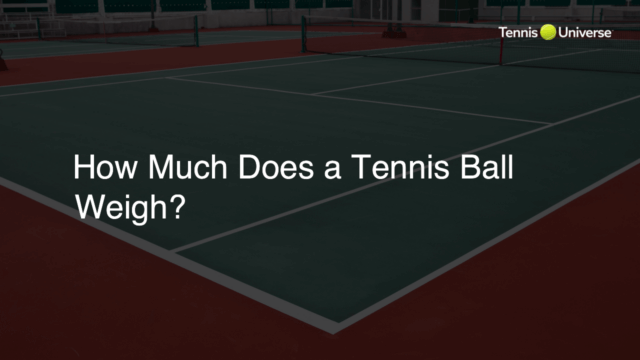The diameter of a tennis ball is approximately 6.54-6.86 centimeters (2.57-2.70 inches).
Introduction to Tennis Ball Size
When playing tennis, the size of the tennis ball greatly affects the game. In this blog post, we discuss the diameter of a tennis ball to help you understand its role in the sport and how it interacts with your tennis racket.
Official Tennis Ball Diameter
According to the International Tennis Federation (ITF), the official diameter of a tennis ball lies within the range of 6.54-6.86 centimeters (2.57-2.70 inches). This standardized size ensures a consistent playing experience in professional and recreational matches.
Impact of Tennis Ball Diameter on Play
The diameter of the tennis ball influences aspects like speed, bounce and trajectory. A larger diameter offers more surface area for contact with the tennis racket, potentially providing better control and more power. However, larger balls require more force to generate speed, leading to slower gameplay.
Interaction with the Tennis Racket
A tennis racket’s string tension, head size, and weight also play a role in how the ball performs on the court. A larger head size provides more power, while a smaller head size offers better control. Combining the ideal tennis racket with the correct tennis ball diameter can lead to an enhanced playing experience.
Choosing the Right Tennis Ball
Several factors determine the right tennis ball for you, including skill level, playing surface, and personal preference. Beginners might benefit from low compression balls, which are designed to be slower and offer more control. On the other hand, experienced players may opt for pressurized balls that provide a faster pace and more bounce.
Distinctions Between Tennis Balls
While the standardized diameter for tennis balls is crucial for consistent gameplay, different balls are intentionally designed for specific purposes. Some variations to consider include pressurized vs. non-pressurized, recreational vs. tournament grade, and even color differences to cater to diverse environments and players’ needs.
Pressurized vs. Non-Pressurized Tennis Balls
Pressurized tennis balls have an inner air pressure that gives them more bounce and spin. These balls are preferred for professional and competitive play. However, they tend to lose bounce and become flat over time. Non-pressurized balls, also known as pressureless balls, may feel heavier and less bouncy initially but maintain their playability for longer, making them ideal for practice or casual play.
Recreational vs. Tournament Grade Tennis Balls
Recreational tennis balls cater to all skill levels and are more durable than tournament-grade balls. Tournament-grade balls, however, provide better bounce and performance, conforming to ITF standards. It is important to select a ball that matches your level of play for optimal results on the court.
Tennis Tips: Adapting to Different Ball Sizes
Here are some tennis tips to help you adapt to different tennis ball diameters:
- Adjust your swing: A larger ball requires a more forceful swing to generate power and speed. Conversely, a smaller ball requires more control and finesse.
- Adapt your footwork: The bounce of different ball sizes impacts your timing, so adjust your footwork to ensure proper positioning.
- Modify your grip: Experiment with your grip on the tennis racket to get a feel for what works best with different ball diameters.
- Practice with various ball types: Use both recreational and tournament-grade balls during practice sessions to familiarize yourself with the differences in their performance.
FAQ Section: Tennis Ball Diameter
In this section, we address some frequently asked questions related to tennis ball diameter and provide brief, directly related answers to give you comprehensive understanding on this topic.
How is the tennis ball diameter measured?
Tennis ball diameter is measured as the straight-line distance across its widest part, passing through its center. The standard unit for measurement is centimeters, though it may also be expressed in inches.
What are the dimensions of a tennis racket?
A typical tennis racket has a length ranging from 68.6 to 73.7 centimeters (27 to 29 inches) and a head size between 580 to 760 cm² (90 to 120 in²). The head size, along with string tension, impacts the interaction between the racket and the ball.
Do different tennis court surfaces affect the ball’s performance?
Yes, tennis court surfaces impact ball performance. For example, clay courts slow down the ball and produce higher bounces, while grass courts make the game faster with lower bounces. Consequently, the ITF specifies different ball types to better suit particular court surfaces.
How often should tennis balls be replaced?
Tennis balls should be replaced according to their level of wear and performance. Pressurized balls may need to be replaced after a few games or weeks of use, while non-pressurized balls can last longer depending on the frequency of play. Replace balls when they lose their bounce or become damaged and interfere with game consistency.
Are larger or smaller tennis balls better for beginners?
Choosing the ideal ball for beginners depends on factors like skill level and coaching methods. Many beginners find low compression tennis balls helpful as they are slower and provide better control, helping new players develop their skills on the tennis court.












